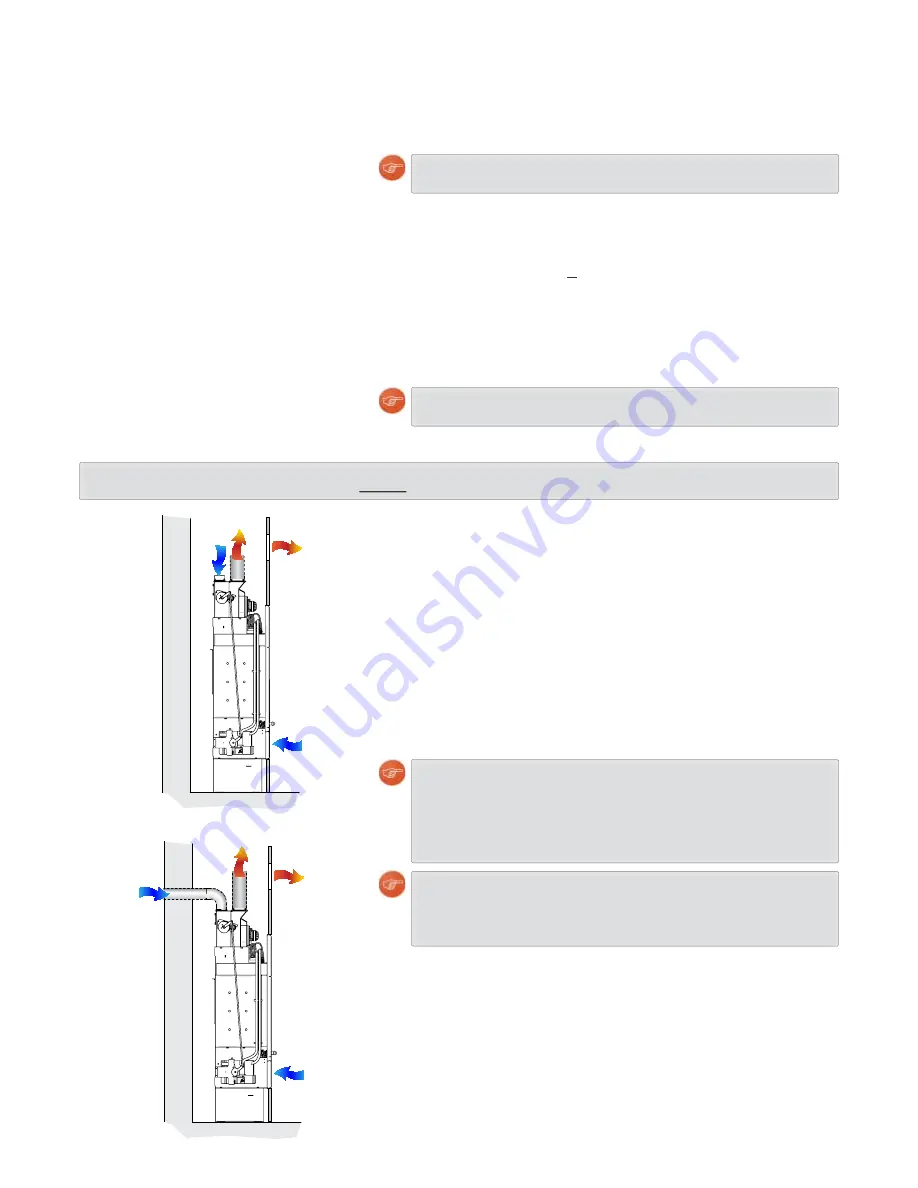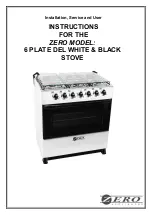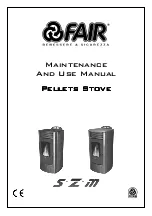
page 9
11. Air supply for combustion WITH dependence on indoor air
(open-flued appliance)
11. Air supply for combustion WITH dependence on indoor air
(open-flued appliance)
Air supply for combustion via the room where
the appliance is located
the air required for combustion is drawn from the room where the appliance
is located. the room must be periodically ventilated, especially in well sealed
buildings.
therefore provide sufficient changes of air in the room where the appliance is
located. For rooms exceeding a volume of 50 m³, we recommend exchanging
1.5 times the volume of air per hour. For smaller rooms the rate of air exchange
should be increased.
If there are additional heating appliances in the same room, make sure that
the air inlets can supply sufficient air for combustion for the operation of all
appliances.
Only if certain conditions are fulfilled it is permissible to operate open-flued
fireplaces in combination with ventilation systems etc. For further information
seek the advice of the manufacturer of your ventilation system.
Negative pressures in the room where the appliance is located (e.g. through ven-
tilation systems, extractor hoods, etc.) may impair the functioning of the fireplace
and its safety system and are therefore not permissible.
Please consult the local qualified chimney sweep and observe the local fire pro-
tection laws as well as the standards DIN 18896 (technical standards for the ins-
tallation and the operation of fireplaces for solid fuels).
Negative pressures in the room where the appliance is located (e.g. through ven-
tilation systems, extractor hoods, etc.) may impair the functioning of the fireplace
and its safety system and are therefore not permissible.
Please consult the local qualified chimney sweep and observe the local fire pro-
tection laws as well as the standards DIN 18896 (technical standards for the ins-
tallation and the operation of fireplaces for solid fuels).
Operate extractor hoods only with re-circulated air operation!
With ducted extractor hoods, an adequate supply of air must be ensured by me-
ans of separate safety equipment (e.g. contact switches on the windows, negative-
pressure monitoring).
Operate extractor hoods only with re-circulated air operation!
With ducted extractor hoods, an adequate supply of air must be ensured by me-
ans of separate safety equipment (e.g. contact switches on the windows, negative-
pressure monitoring).
The exhaust system must be inspected by the local qualified chimney sweep be-
fore starting to use the appliance.
The exhaust system must be inspected by the local qualified chimney sweep be-
fore starting to use the appliance.
The total length of the connecting pipe between appliance and chimney should
not exceed 1.5 m.
The total length of the connecting pipe between appliance and chimney should
not exceed 1.5 m.
•
the flue pipe must not project into the chimney.
•
Vertically positioned flue pipes must not exceed a length of 125 cm if they
are not insulated.
•
Horizontal pipe sections must not exceed a length of 100 cm.
•
the flue pipe must not descend towards the chimney, but must incline slight-
ly upward.
Figure 3
Figure 4
Chimney flue connection independent of indoor air
(room-sealed appliance)
If the appliance is operated independently of indoor air, the following instruc-
tions are also to be observed:
•
the chimney flue must be sealed at the pipe connection by means of a tem-
perature resistant sealant.
•
the flue pipe must have a gas-proof connection to the chimney and must
be sealed by means of an appropriate rope seal and a temperature resistant
sealant (e.g. heat-resistant silicone).
air intake
air intake
exhaust gas
exhaust gas
convection air
outlet
convection air
outlet
air intake / convec-
tion air outlet
convection air
outlet
Outdoor air supply for combustion
(Figure 4)
•
the air for combustion is only slightly pre-heated!
•
Max. length 4 m with 3 bends.
Air supply for combustion via the room where
the appliance is located
(Figure 3)
•
the air for combustion is pre-heated.
•
It is necessary to ventilate the room at regular intervals or to provide a
permanent opening for ventilation to the outside.
Summary of Contents for Aqua Insert+P
Page 35: ...Seite 35...










































